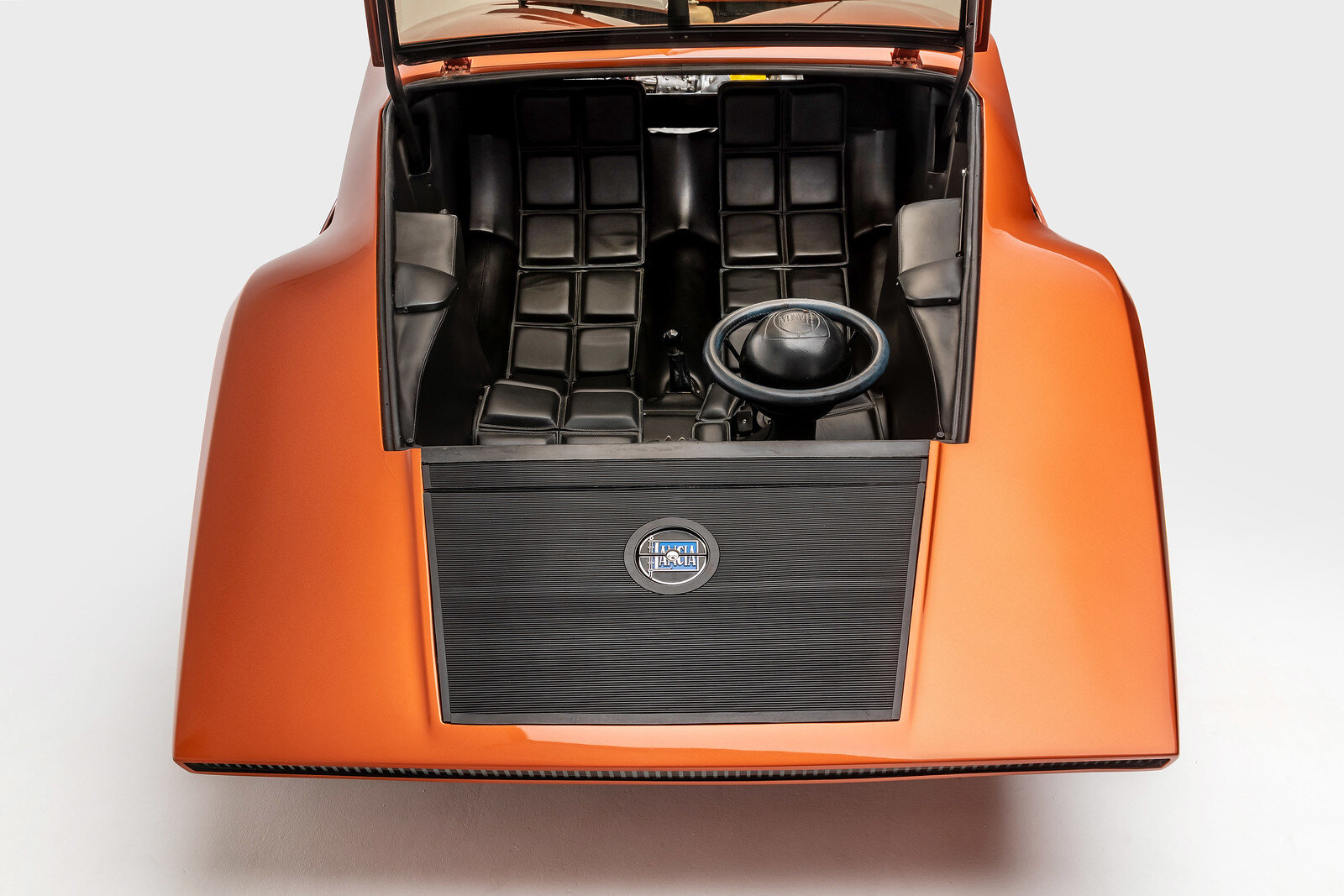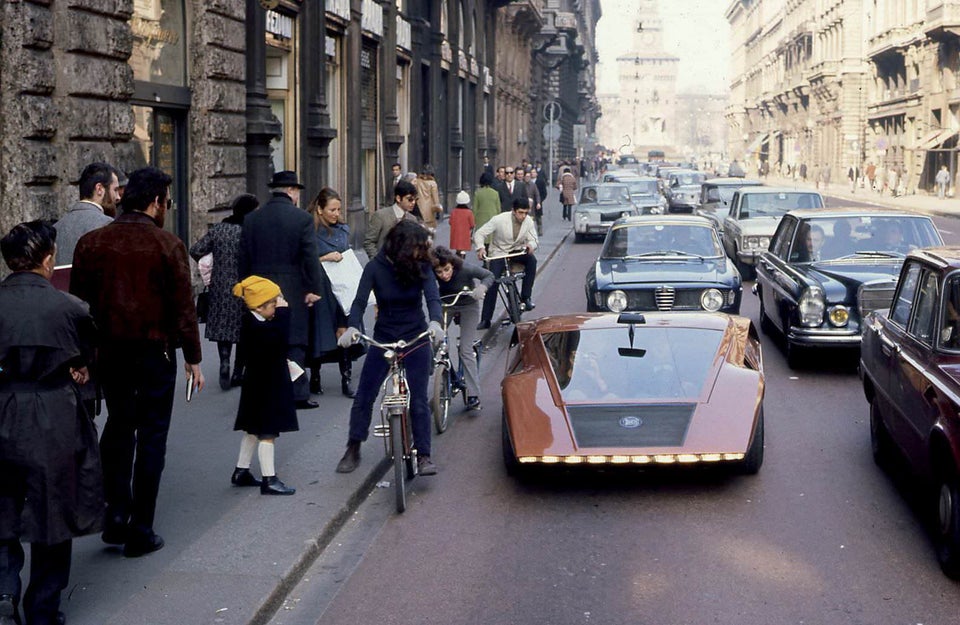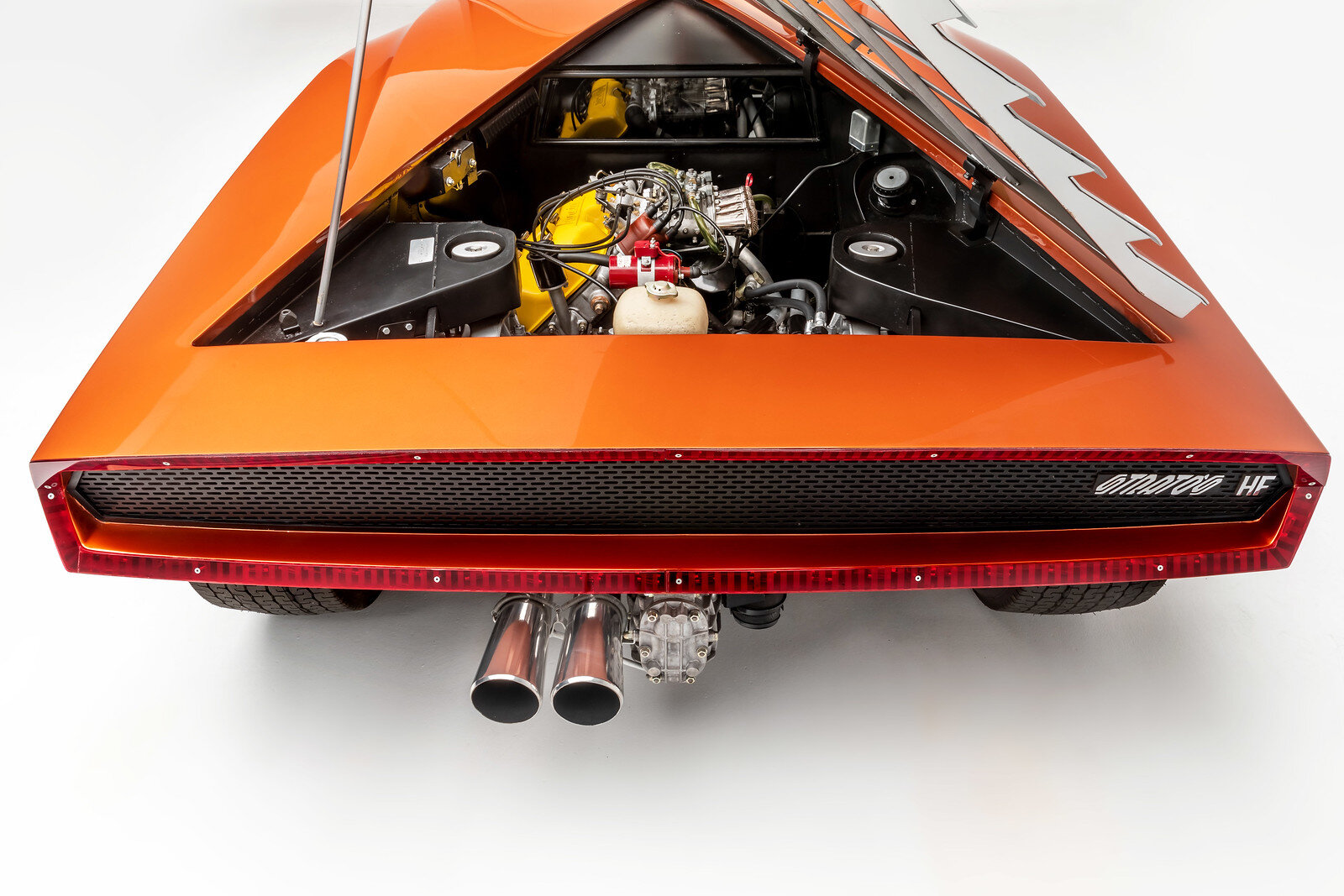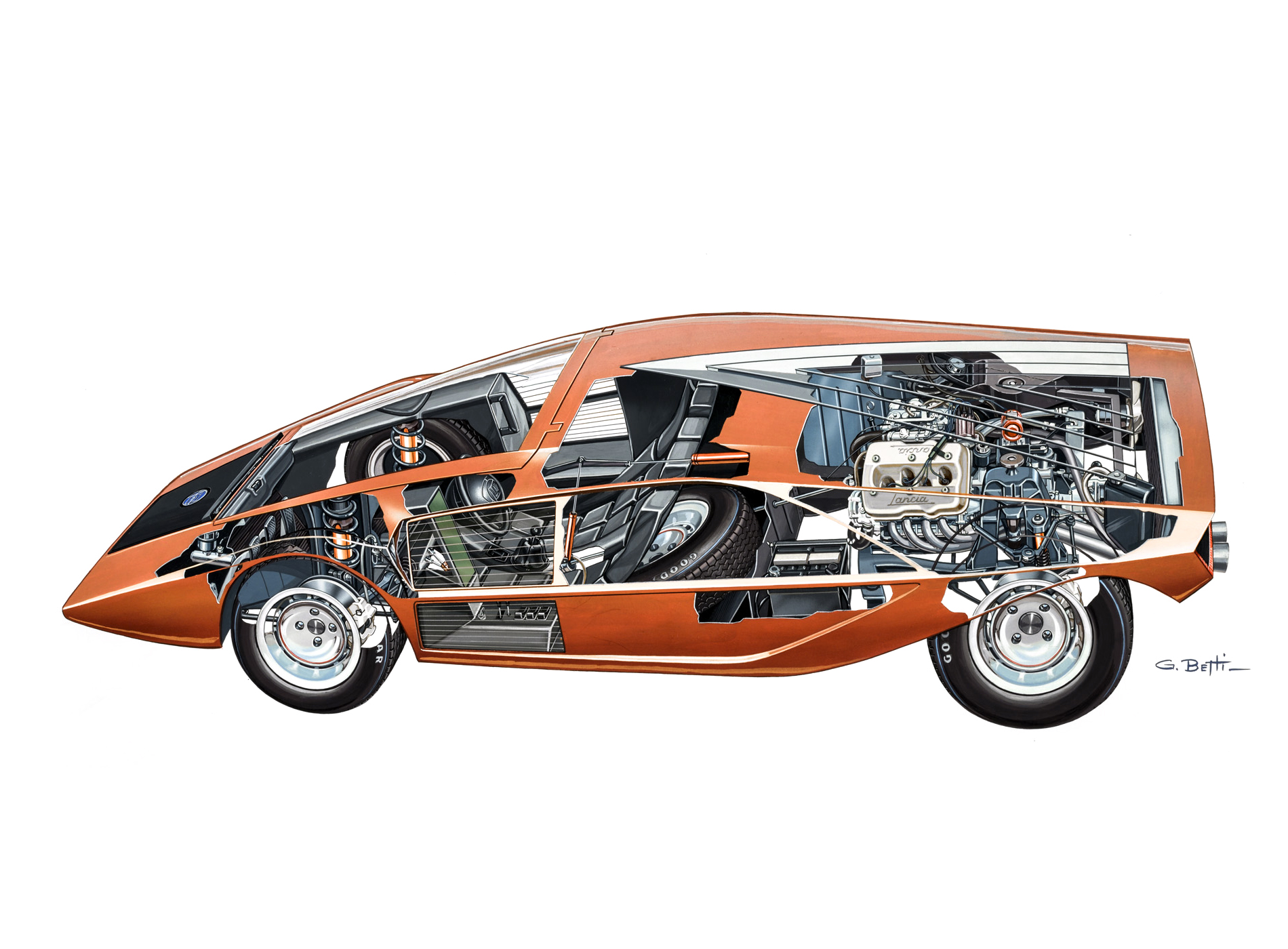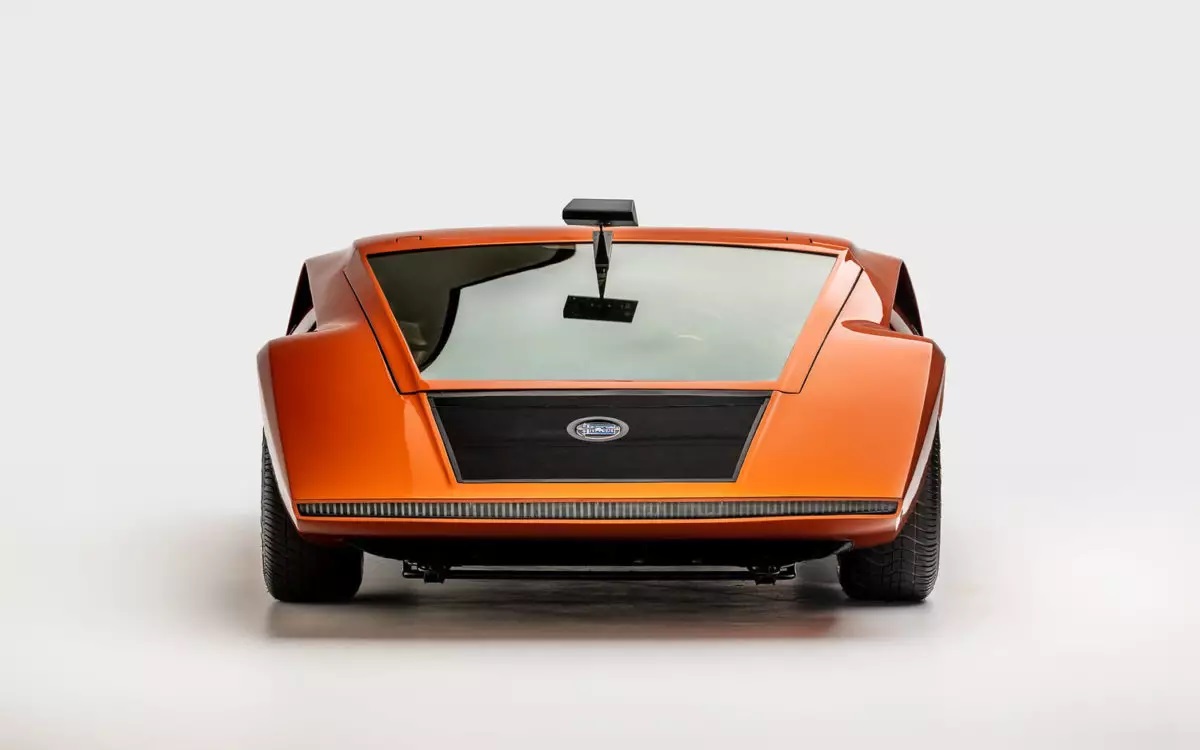Photo credit: Ted7, Petersen Museum
From 1970 to 1974 Lancia participated in the World Rally Championship, winning the international title for manufacturers in 1972 and important races such as the Monte Carlo and RAC rallies with the small Fulvia HF, powered by a small 1,600cc engine. But competition was fierce and a new model for racing was desperately needed. An opportunity was already there: in 1970, based on Fulvia mechanics, Nuccio Bertone had presented a futuristic concept called the Stratos Zero.
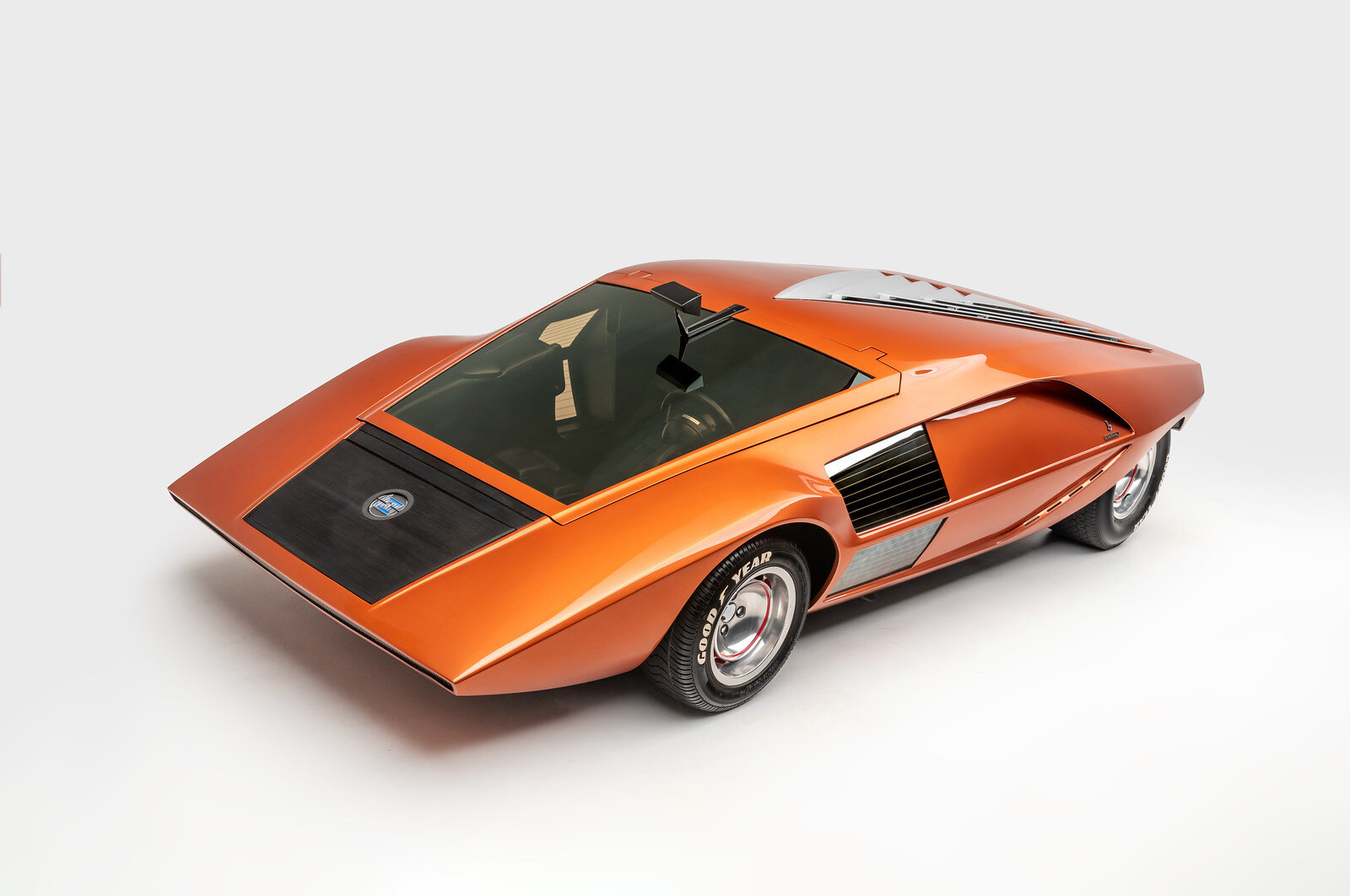
In full respect of the fashion of the time, starting with the single seaters, which placed racing drivers almost prone in the cockpit for aerodynamic reasons, the design of the Stratos Zero started from the distribution of weights and volumes and had an extremely low driver’s seat. This gave Marcello Gandini the idea of replacing the doors with a single access point in the form of a windshield that had to be raised and lowered to gain access. Whereas part of the mechanics originated from the Fulvia, the chassis instead was completely new, taking up elements of the production car such as the double-wishbone rear suspension that in reality was nothing more than the front axle of the Fulvia.
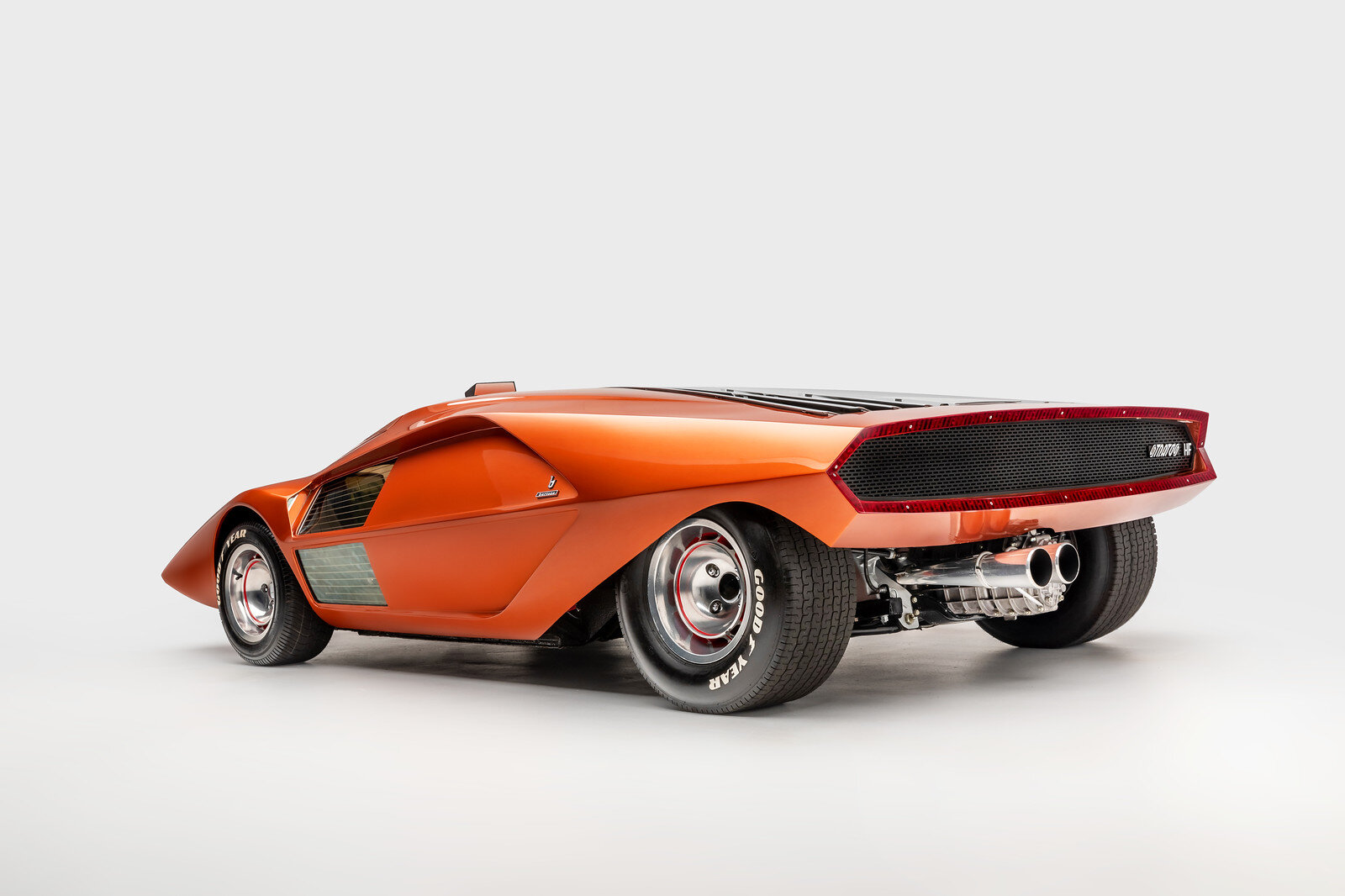
This really extreme wedge shape made the car more suitable for outer space than for planet Earth, so much so that the name Stratos comes from the idea of Nuccio Bertone to call it, originally, “Stratolimite”, as in “limit of the stratosphere”. Starting from this magnificent concept built with the support of the Sports Director, Cesare Fiorio and the General Manager, Pier Ugo Gobbato, but without official recognition, the real Stratos project started, which had the objective of producing 500 examples for homologation purposes. However, a different engine and revised mechanics suitable for racing were required. For the engine, the powerful 2,400cc Dino V6 was chosen. In 1973, the Stratos HF was finally ready, and its innovative shape eclipsed the jewel of courageous style that was the Stratos Zero. Yet another unfortunate star that fell just as it was at its brightest.
